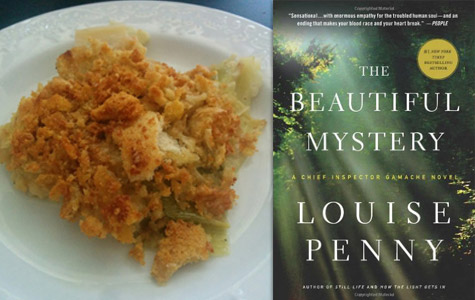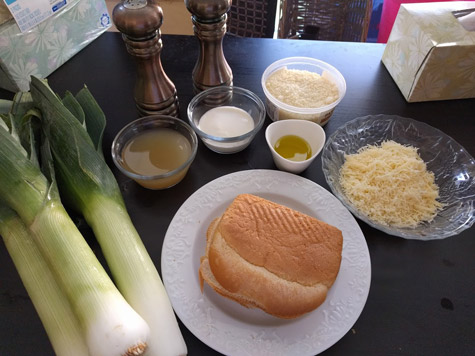
The bad news is that we hear virtually nothing of the village of Three Pines and its inhabitants in this 8th installment of Louise Penny’s Inspector Gamache series. The good news is that Ms. Penny has instead decided to tackle one of the greatest mysteries in music history!
Chief Inspector Armand Gamache and his second-in-command, Inspector Jean-Guy Beauvoir, are sent to investigate a murder set in a remote monastery that houses a reclusive order of monks who have been made, rather ironically, world-famous by their exquisite Gregorian chants. This is tricky work: writing a novel that succeeds at integrating church scholarship with a murder mystery (and compelling personal drama, but more on that in a moment). Umberto Eco tried it in The Name Of the Rose. Let it be an example of my standards when I say that I didn’t feel he quite succeeded.
Ms. Penny, on the other hand, writes as gorgeously and intelligently of music as she does of the visual arts that she’s tackled in prior books of the series, and she mixes that with a deep respect for monastic life. I’m a little embarrassed to admit that I figured out whodunnit fairly early in the book, but was then so completely hoodwinked by all the other goings on that the final revelation came as a forehead-slapping surprise to me. Oh, Ms. Penny, you write so diabolically well!
And then, there is the relationship between Gamache and Beauvoir. People who’ve been following the series will know of Beauvoir’s prior addiction to painkillers after a terrible, deadly incident that nearly claimed his life. It seemed fitting that by A Trick of the Light—the preceding book in the series that delves into alcoholism and the healing power of Alcoholics Anonymous—it looked like he was on his way to recovery. But Superintendent Sylvain Francoeur, Gamache’s superior, has other plans when he makes his way to the monastery to “supervise” his underlings…
Gosh, just thinking about it brings up all sorts of wrenching emotions—so I’m going to switch to talking about something positive instead: the food! As tempted as I was to try out the recipe for “Wild Blueberries Dipped In Dark Chocolate” that was also included in The Nature Of The Feast to accompany this title, I didn’t believe I’d be able to find any fruit to rival the exquisite berries described in the book (also, I was feeling a bit lazy and it sounded awfully labor-intensive). Instead, I tried out the other dish, which Beauvoir took a heaping helping of in the narrative:
Cheese and Leek Dish with a Crunchy Crumble Top
*Makes 6 servings
Ingredients

4 medium leeks (about 1 pound/450 g)
1 cup (3 oz/90 g) grated Cantal, Swiss, or Gruyère cheese
½ cup (120 ml) chicken broth
¼ cup (62 ml) heavy cream
½ teaspoon kosher salt
¼ teaspoon freshly ground black pepper
2 cup coarsely crumbled day-old white bread
½ cup (1 oz/30 g) grated Parmesan cheese
2 tablespoons olive oil
Instructions
1. Preheat the oven to 375°F (191°C). Trim the dark green parts and root end from the leeks, leaving just the white and light green parts behind. Halve the leeks lengthwise, then cut each half across into 2-inch (5-cm) or so pieces. Wash thoroughly and drain. Arrange about half the blanched leeks in an even layer in 9×9-inch (23×23-cm) baking dish. Scatter the Cantal cheese over the leeks. Top with the remaining leeks. Pour the broth and cream over the leeks. Season with the salt and pepper. Cover tightly with aluminum foil and bake until the leeks are tender, about 40 minutes.
2. Pulse the crumbled bread, Parmesan cheese, and olive oil in a food processor just until the bread cubes are broken up and the cheese and oil are blended through. (The pieces of bread should still be quite large.) Taste and add a pinch more of salt and/or pepper if you think it needs it. Uncover the baking dish, sprinkle the bread mixture over the leeks and bake, uncovered, until the leeks are very tender, the liquid is bubbling and the crumbs are browned, about 20 minutes. Serve hot or at room temperature.
You guys. You guys.
I was thinking to myself, so this is basically onions baked in cheese—how good could this possibly be?
It was SO GOOD.
Now, I’m a big fan of casseroles in general, but this was far and away one of the easiest and tastiest casseroles I’ve ever made. It was so good, I ate it on its own for three meals in a row—by choice! I’m thinking it’s the dish I’ll be bringing to the next family holiday gathering, both to show off and to spread a little culinary love amongst the ones I love.
I did have one quibble with the recipe itself though, and that was in the use of the word “blanched” to describe cleaned leeks. Having had to learn how to blanch vegetables for a prior column, I can guarantee you that you don’t need to do all that work for this casserole. Instead, enjoy this tasty dish after the easy-peasy cooking process, perhaps while enjoying some Gregorian chants and savoring Ms. Penny’s writing.
Next week, I’m “forced” to start making desserts again with a recipe for trifle! Tell me how you’re doing as you cook along with me from The Nature of the Feast, Louise Penny’s free cookbook accompaniment to her bestselling Inspector Gamache series.
See also: Cooking Through The Nature of the Feast: A Trick of the Light by Louise Penny
To learn more or order a copy, visit:
opens in a new window![]() opens in a new window
opens in a new window![]()
Doreen Sheridan is a freelance writer living in Washington, D.C. She
microblogs on Twitter @dvaleris.
Read all posts by Doreen Sheridan for Criminal Element.
